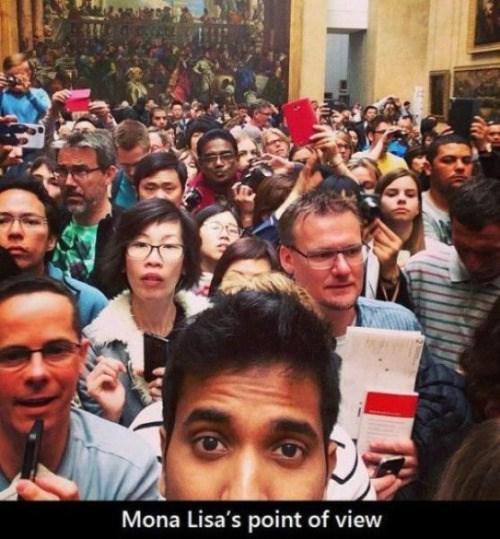An average person spends 52 days of their life queuing. The worst offenders are, of course, supermarket lines, public transportation, the post office and airports. Some of these industries heavily rely on take a number systems.
There are some magnificent outliers, though. Queues that are so out of the left field, they become infamous.
London Eye, for example, has on average a 2.5-hour queue. The stage show Harry Potter and the Cursed Child was so popular, some people would be told they were 130,001st in the online queue for a ticket.
But that’s nothing, nothing compared to the kind of queues we’re looking at in this article.
Prepare to meet the world’s most famous and longest physical queues, which not even the most sophisticated queue management tool could fix.
(Unless, of course, you’re using Qminder. Wink-wink.)
Wimbledon’s infamous ‘The Queue’ 🎾
Wimbledon’s queues are often described as one of those great old-time traditions. It’s the poster child for queues that became an event in themselves.
The queue — or, as the official Wimbledon documentation calls it, The Queue — operates on a FIFO basis. The moment you arrive, you are given a special Queue Card that indicates your position in the queue.
If you’re fairly early (Q1 to Q500), you may even get a ticket for Centre Court. But best not get your hopes up.
And yeah, that’s right. This is essentially a queue to the ticket stand, so if you’re far back, you might even miss the entire play.
Also, your Queue Card only tells you your position, it doesn’t reserve it for you.
Confused? No worries. For people like you, Wimbledon has issued their 31-page A Guide to Queuing.
This surprisingly in-depth guide includes tips, maps, recommendations and even “the queue code of conduct”.
Some rules are a no-brainer, like “don’t be an antisocial idiot” (paraphrased) and “please don’t drink too much”.
Other rules and tips, however, sound like they’re sending you off to some hot zone:
Only bring essential items.
Come prepared for all weather conditions.
Unattended items will be removed and may be destroyed by the police.
Only two-person tents are permitted. No gazebos.
“Wait a minute,” you might interject. “Tents?!”
Yes. Tents.
The queuing is so competitive that it’s advised to stay overnight and rise early to get a chance at a good ticket. Wimbledon’s guide says: “Unfortunately, we cannot give you an exact answer, but we recommend that you arrive very early on the day that you would like to enter the Grounds.”
But it’s not all that bad. Here’s how blogger Tiff describes her experience sleeping in a tent at Wimbledon:
The ground is grass, so fairly comfortable, but worth putting a cushion on.
Wow. Sign me up.
Despite all that, Tiff’s experience sounds like a positive outlier. Not all queuers are this lucky; some have to come as early as 40 hours ahead of time.
A woman from the Netherlands has been camping for nine days, waking up at 5.30am each day. “Thankfully”, there are specially trained stewards who go around waking people up and distributing queue cards.
This marine-level commitment extended to eating, too: “We eat in the queue, or get a takeaway and eat in front of the tent.”
Why? Well, there’s this teeny-tiny rule about how you can’t be absent from the queue (sorry, “The Queue”) for more than 30 minutes.
No, not even for a toilet break. (Thankfully, there are at least portable bathrooms in place.)
The shower? Well, you can rent a room at a nearby hotel and have a quick shower there. “Quick” being the keyword.
Another woman, apparently a huge fan of Roger Federer, queued from Saturday for their idol’s match on Tuesday. As soon as the match was over, she had to run back to the queue and start all over again.
If you fail to comply with Wimbledon’s regulations, your Queue Card will be confiscated. Perhaps this explains why all queuers exhibit a textbook case of Stockholm syndrome when they say “The queue is special. I enjoy it.”
We’re sure you all do, queuere. Blink twice if they’re holding your kids hostage.
The queue to the first McDonald’s in Soviet Russia 🍔
A new McDonald’s opening in your neighborhood sounds like a historical moment only when you’re a kid.
But when a new McDonald’s is opening in a superpower nation, just a few years past the height of the Cold War, you know that the times sure are a-changin’.
If you’ve read our article Back in the USSR: The Art of Soviet Queues, you know where we’re going with this bit.
That’s right, it’s the Soviet queue to beat all queues — the line to the USSR’s first McDonald’s restaurant, when capitalist service met Soviet queuing habits.
This was a joint initiative between McDonald’s of Canada and the Moscow city council, first proposed at the meeting with Soviet officials at the 1976 Summer Olympics in Montreal.
In 1988, they finally got permission, and construction works started. A year later, over 50 million USD was invested in this project, with a special factory for producing brand ingredients.
At the time, it set the record as the largest McDonald’s restaurant in the world. It could seat 900 customers (700 inside + 200 inside), with a staff of about 600 cashiers selected from over 35,000 applicants.
When it finally opened on 31 January 1990, the initial projections claimed only a thousand people would come for the opening of the restaurant.
They were off by a factor of 30.
Throughout its launch day, Moscow McDonald’s set another record by serving more than 30 thousand visitors.
The previous record? It belonged to Budapest’s own McDonald’s, at a meager 9,100 clients.
Not even the price could put a dent in such a high interest.
Bic Mac was selling for 3.75 Soviet rubles, which meant that your average worker had to part with half a day’s wage to take a bite out of the capitalist wonder.
Though it took some people eight hours to get to the front, it wasn’t anything they haven’t experienced before — in the Soviet Union, waiting was part and parcel of life.
“That wasn’t so much of a problem as we were used to standing in lines for days just to get our monthly ration of sugar and tea,” photographer Mitya Kushelevich recalls.
Luckily, even despite the onslaught of visitors, the deficit was not about to happen. Machinery at the nearby food-processing plant cranked out 10,000+ hamburgers hourly from beef provided by eight slaughterhouses, each inspected by quality control officers.
Unfamiliar with the burger-eating etiquette, many people would pick the Bic Mac apart, layer by layer, and eat it with a knife and fork.
People were equally surprised by the size of McDonald’s milkshake, but perhaps the biggest surprise was the service itself.
“Once inside we were blown away by the number of young cashiers behind the huge counter, smiling, moving like bees, serving one meal after another. Nothing like our fat old ladies in white gowns sitting in front of empty shelves, pyramids of dusty canned food as window dressing.”
Muscovites were plenty familiar with waiting, queues and deficit, but customer service was something new. Managers at McDonald’s had to train new cashiers to smile when serving.
It may sound absurd to some, but smiling wasn’t a sign of politeness and friendliness like it is today.
An old Russian proverb states, “A smile without a reason is a sign of idiocy.” [Смех без причины — признак дурачины.]
The opening of the Moscow McDonald’s drew a lot of attention from political figures, too. Boris Yeltsin, who would then become the first post-Soviet president of Russia, was seen standing in line and shaking hands with the staff.
Today, over half a thousand McDonald’s restaurants are operating in a hundred Russian cities, but none of them have the same level of gravitas about them.
Unfortunately, Russia’s first McDonald’s restaurant closed for good on 25 August 2014, but its legacy and the endless anecdotes surrounding it endure.
Queues for The Beatles’ tickets at the height of Beatlemania 🎸🎵

It’s the early sixties in the UK (well, everywhere else, too), and the Fab Four phenomenon is sweeping the nation.
Beatlemania was what can only be described as mass hysteria. Truly, it seemed that there was an airborne virus that only affected teenagers and made them look straight-up possessed.
The traditional British stiff upper lip gave in at the sight of four mop-top-sporting gentlemen with musical instruments. Young people would descend at ticket counters across the country in hopes of snatching that front-row ticket.
Or any ticket really, as The Beatles’ shows were getting sold out left and right.
Some queues would reportedly get as far as 1.6km long. Tens of thousands of teenagers would flock to ticketing booths and even stay overnight, not unlike what’s happening at Wimbledon.
In Newcastle, thousands of teenagers showed up two whole days early, sleeping bags and flasks in hand. Camping out on a cold pavement (that was late October, mind you) in front of the booking agency, ecstatic fans would not even be deterred by pouring rain.
Precipitation wasn’t the only thing that showered them during their two-day vigil, though. Reportedly, a lorry with the sign ‘Down with The Beatles’ was driving past the campers and threw flour at the most aggressive of them.
In total, four thousand fans gathered in Newcastle to get tickets for a Beatles appearance.
One, but probably not the only one, girl even lost her job because she was in the queue for tickets instead of working at a garage.
(In her defence, it was Saturday.)
When the ticket office finally opened, police had to be called in to manage the “stampede and casualties”.
Other cities didn’t look much better by comparison, either.
In Portsmouth, the queue started astonishing 90 hours before the ticket office opened. Beatlemaniacs brought food, drink, blankets and transistor radios to pass the time.
Two overly committed 16-year-old girls spent four nights outside to hold their place in the queue.
I’m sure all the queuers appreciated the irony when The Beatles sang It Won’t Be Long afterwards.
But even when the tickets ended, the horrors wouldn’t. Scenes of mayhem followed the Fab Four.
In Carlisle, for example, schoolgirls “battled police for four hours” to gain entry to a sold-out show. During The Beatles’ Australian tours, teenagers would be treated for “fainting, hysteria and minor injuries”.
You’d be naive to think that most schoolgirls were there to appreciate the subtleties of their vocal skills and musicianship. To see The Beatles live was something many would be willing to, hopefully only figuratively, kill for.
Sounds like religious zealousness? Get this: some queuers would often wear or sell plastic Beatles wigs.
Because nothing says “I’m a reasonable person” quite like a cheaply-made plastic mop-top.
That’s right, the ratio of queuers to ticket-getters was 16 to 1. All that to only hear 11 songs.
The queue for the Mona Lisa at the Louvre 🖼️
When Leonardo Da Vinci was creating the Mona Lisa, he pioneered some of the painting techniques that would be heavily borrowed from during his lifetime already.
For example, the Mona Lisa is a foremost example of sfumato, which is a soft, almost out-of-focus-looking transition between colors. Da Vinci extensively experimented with optics and layering to better understand and hone this technique.
He was a man with a vision, alright.
What he didn’t envision, though, was thousands upon thousands of people stacked almost literally on top of each other just to see his masterpiece.
On a good, non-COVID-19 year, the Louvre attracts over 10 million visitors. Out of these 10 millions, eight millions are estimated to have come just to see La Gioconda.
If you’re planning to cross out “See the Mona Lisa” from your bucket list, get ready for disappointment. One visitor complained about the queuing disaster on TripAdvisor:
“Several floors of queues but arriving in the gallery we were frankly shocked. The staff treated visitors like cattle. Result: stress to see the painting behind glass from several metres. Scandalous!”
Another visitor agrees and uses the same cattle imagery:
“Over an hour wait from the bottom [floor] and literally being herded like cattle up the escalators, through a snake-like queue in a room before the main room, then another snake-like queue in the main room. Once in there, you were allowed one picture and were told to move on, so maybe 30 seconds.”
(On a similar note, we are huge proponents of the cattle allegory when it comes to poorly-managed queues and bad customer service.)
The thing is, sometimes you don’t get a chance to see the painting at all. Only those who pre-book and reserve a time slot are guaranteed a selfie in front of the Mona Lisa — and only from a distance of three metres.
To see Paris and die? Rather, “to die trying to see the Mona Lisa”.
Only the tallest or most persevering manage to get to the painting. But the worst thing isn’t even the queue itself.
It’s the lack of intimacy.
Every waking moment, you are huddled up with other people breathing down your neck and other body parts. And all of those people wait for a chance to take a selfie while they can, mobile phones in hand.

One visitor noted, “I feel a bit distracted by all the selfies. It feels more like it’s about everybody else’s moment than it is about the painting”.
The Louvre tries hard to make the queuing experience at least somewhat pleasant and less prone to congestions.
Visitors now arrive via two winding queues rather than two straight lines. Visibility was upgraded, too: the painting got a new anti-reflective glass cover which enhances transparency.
The walls behind the Mona Lisa were changed from eggshell yellow to midnight blue, which is believed to add depth and accentuate the painting.
Nevertheless, humanity’s interest in the Mona Lisa will not waver any time soon. So thanks, Leonardo, for contributing to needless wait times.
This is exactly why you’re my least-favorite ninja turtle.
Harvard academic Leo Mann explained in his 1962 essay Queue Culture that queues work best when they mimic a normal social system, imposing “cultural values of egalitarianism and orderliness”.
When these principles go awry, we get the queues mentioned above.
If you don't want your queues to end up in this list one day, you'd better pay more attention to your queueing strategy.
All it takes to de-wimbledonize your waiting lines is to sign up for Qminder, which you can do for free and get a 14-day trial. In just two weeks, you might as well appear in our other article, The World's Shortest and Most Satisfying Queues.






